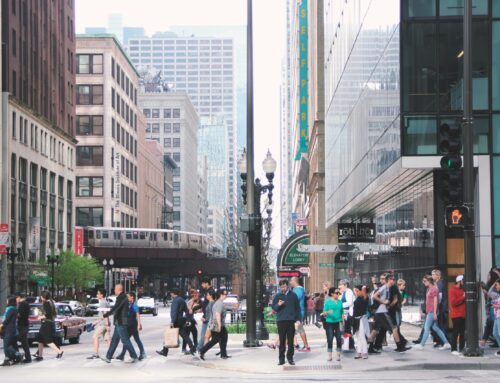It is no secret that productivity is a major driver of business growth, helping companies achieve objectives. Yet, the road to achieving optimal productivity is one laden with one major challenge: how to avoid burnout.
Did you know that 1 in 5 UK workers felt unable to avoid burnout, manage pressure and stress levels at work? Did you also know that more than half of G7 citizens have experienced burnout, anxiety or depression at some point in their lives?
Burnout costs between $125 billion and $190 billion every year in healthcare spending in the US. Burnout has been stopping us from staying healthy and productive. In this blog, we will discuss what burnout is and how to avoid burnout and stay productive.

What is Burnout?
Many of us often feel unprecedentedly stressed and overworked during the pandemic, but aren’t equipped with the proper tools to cope with burnout. If you have felt the same, it may be time to take a break, and think about how to stay productive and avoid burnout.
Burnout is a state of emotional, physical and mental exhaustion caused by excessive stress.
The most common signs of burnout include:
- Constant exhaustion and feeling overwhelmed
- Feeling dejection and/or hopelessness
- A sense of being ‘trapped’
- Experiencing extended periods of procrastination
- Self-doubt and anxiety
Burnout is not something that goes away on its own. Until the underlying issues are addressed, burnout will continue to plague and potentially even worsen productivity if ignored.
6 KEY STEPS TO AVOID BURNOUT

To avoid burnout and help your team, all you need to do is follow these 6 simple steps.
STEP 1 – Being Aware of Your Mental Health
First, it is important to focus on your mental health and wellbeing before focusing on your performance. Oftentimes, during the pursuit of productivity, many people fail to realise the importance of mental wellbeing.
At Breakthrough, we believe that being in the right mindset can help facilitate and enable a more productive working environment and keep employees from experiencing a bad burnout break. Studies have shown that by improving mindfulness and awareness of mental health, productivity gains can be observed alongside avoiding burnout.
There are several self-care strategies that you can use:
- Connect with Nature. This year’s mental health awareness month had an increased focus on the topic of ‘nature’, which has given some great advice on how to manage mental health. By taking a little bit of time out of our daily lives to spend some time with nature, we can effectively decrease stress levels and improve mental health.
- Do Exercise. It can be a 10-minute walk or several hours of intensive workout. It is important you choose exercise that you enjoy. It is easy to set an unattainable goal when we start an ambitious fitness plan. It ends in a situation where we over exhaust ourselves and are left unsatisfied. Rather than choosing a very ambitious plan, try setting milestones, and focus on small but steady challenges to track your progress. This will bring you both – a challenging and a rewarding experience. It helps you build mental and physical health, while bringing satisfaction and confidence every time you achieve your fitness goals.
- Get enough sleep. As the National sleep foundation reports, sleeping less than six hours each night is one of the strongest predictors of burnout at work. Inadequate sleep time can impact memory, mood, decision making and problem-solving. A single night of poor sleep can result in an unproductive day. Multiple consecutive nights of inadequate sleep can have long-term negative effects on your performance. You can read more about the impact of sleep on your career in this blog.
- Cut down alcohol, caffeine and nicotine. If you have always felt tired after one night of sleep, it may be time to change your sleeping and dietary habits. Studies find alcohol and nicotine before bedtime have a negative effect on sleep quality. Whilst coffee gives your body a false sense of energy, it never substitutes for sleep. Over-dependence on caffeine increases the risk of burnout. You may find coffee clears your mind in the early morning so effectively, but coffee can also easily be addictive when you start overconsuming and using it as a tool to control your behaviour. If you are experiencing or recovering from burnout, coffee should be off the table until you get back to normal, which helps sustain performance in the long term.
- Seek social connections outside of work. People who are more socially connected to family and friends are happier and healthier. Happiness from social connections also helps productivity and reduces the risk of burnout. Research from Oxford University finds happy workers are 13% more productive compared to discontented workers.
STEP 2 – Know Your Boundaries
A lack of boundaries can cause oneself to take on increased workloads, priorities, or burdens. This can further lead to reduced focus, time and energy to get important tasks done. Boundaries are essential as they allow us to identify our limitations and avoid burnout when working.

But how do we set and maintain boundaries?
First, identify your tasks at hand and prioritise them in order of importance. Set aside allotted periods of time when you plan on completing your work and enforce boundaries during these periods.
There are many methods when it comes to boundary enforcement and communication is always the starting point.
- ‘Do Not Disturb’. For instance, the ‘do not disturb’ status on Microsoft Team, preventing unnecessary interruptions was greatly used during the pandemic. Whether you use Microsoft Team or other communication tools, it is important you communicate within your team when needed, but at the same time set yourself a boundary between work and life.
- Know each other’s schedule. Make sure you really use a type of synchronised calendars in your team (Microsoft Outlook, Google calendars and others). Doing so will allow your team members to effectively work around your schedule and come to you when you have completed your work.
- Clarity of priorities. We can’t do EVERYTHING. So if you are asked to complete more tasks, ensure you seek clarity from your leader on what is the priority to focus on and what can be removed from your plate for now.
STEP 3 – Know Your Goals
Here at Breakthrough, we understand that goals are essential as they allow us to look to the future with a clear plan. It is important to be mindful of the unforeseen factors we encounter on our journey to achieve our goals and to avoid burnout from the unknown. This can be done by breaking goals down into smaller chunks.
By setting sharper, more defined goals, you can measure and even take pride in the achievement of these goals. You might even see greater levels of productivity in what seemingly may have felt like a long pointless grind.
One useful way of empowering your goals is to use the SMART mnemonic.
What is a SMART Goal?
S – Specific: Be specific in your plan. Know what you want to achieve down to the nitty gritty.
M – Measurable: Have measures to visualise and measure progress.
A – Attainable: Have goals that are actually achievable. (know your boundaries)
R – Rewarding: Having rewarding goals can boost both motivation and productivity.
T – Time: Be aware of the time you have and are willing to spend on achieving your goal.
Using this mnemonic ensures you set rewarding and achieving goals, all within a relevant time period. As a result, it can help towards leading a more productive lifestyle and avoid burnout from a lack of direction.
STEP 4 – Create A Plan
- A good plan is actionable
After identifying your goals, it is important to have an action plan.
One common mistake we have seen is that people try to multitask without actually knowing their priorities. As a result, they end up working on many different activities at once, attending long meetings with different teams that do not give optimal outcomes. Failing to meet deadlines does not add value, rather it creates stress and can lead to self-doubt and burnout.
As we can see in this case, time is the controlling factor. To reduce stress and burnout, one should schedule their timetable accordingly and align it with expected outcomes. A good plan should be clear, tangible, and focused. We recommend using project management tools wisely to improve productivity and team communication.
- Using digital tools to track plans
Some pieces of software that our team have recently been using with success are Microsoft OneNote and Monday.com. They provide a suitable and flexible canvas for us to not only manage and organise individual projects, but creatively visualise notes using different tools and keep plans both organised and visually easy on the eyes, making everyone’s work a lot more accessible for the team.
Another that we recommend is the Microsoft/Google Calendar tool which we use for time management. Such tools help efficiently track the plans you make and ensure that you are on time in delivering objectives through useful little notifications reminding you to do work.
STEP 5 – Stop Procrastinating
Even if we have the right goals and plans, equipped with the right productivity tools, there is still one factor virtually stopping us from getting started – procrastination. Lots of us fall into the trap of “productive procrastination”, which is the act of being busy while still procrastinating on your most valuable tasks.
Procrastination: noun
the action of delaying or postponing something.
A procrastinator often ends up underachieving and fails to reach their potential. Almost all of us as individuals have experienced the effects of procrastination and know the consequences.
-
So how do we avoid procrastination?
1. Realise you are procrastinating
To overcome procrastination, first you need to realise the fact that you are procrastinating and understand why it is happening. Are you putting things off indefinitely? Are you switching focus constantly? If the answer is yes, you are likely procrastinating. Raise your self-awareness.
2. Re-organise to-do list
Having the self awareness to realise you are procrastinating is the first step, but you need to do something about it. We recommend strategically re-organising your to-do list.
- Stop creating a long to-do list with low-priority tasks for your day.
- Group your tasks into valuable tasks, mid-value tasks and low-value tasks.
- For those tasks that you want to avoid, break them down into small tasks.
Unfortunately, a procrastinator’s biggest fear is ‘doing’ these tasks. It may feel like you have accomplished something by writing this list but until you get down to actually completing these tasks, you remain a procrastinator.
3. Have the right mindset to complete tasks
Having the right mindset is the most important part of completing tasks.
- Understand the cause and effect of leaving work undone.
- Rationalise in your head the importance of this task. We cannot stress this enough, but starting the task is often more difficult than actually finishing it.
- Being able to conquer the barrier. This can immensely reduce your chances of stress and burnout.
STEP 6 – Self-Reflection
Living in a fast-paced world, sometimes we forget what we’ve been doing. One helpful habit for improving productivity and reducing stress is to reflect on your achievements weekly. This helps you stay motivated, self-aware of your current position, and redirect yourself to the next step.
At Breakthrough, we self-review our own performance before we review each other’s performance. Self-reflection of your own performance for future development won’t have an instant effect. But, it improves your performance and productivity incrementally.
Amy Sun
For more articles and inspirations about performance and workplace burnout prevention, follow Breakthrough Global on LinkedIn, Instagram, Facebook or Twitter.
If you need expert advice, get in touch with our team to schedule a free consultation call.





